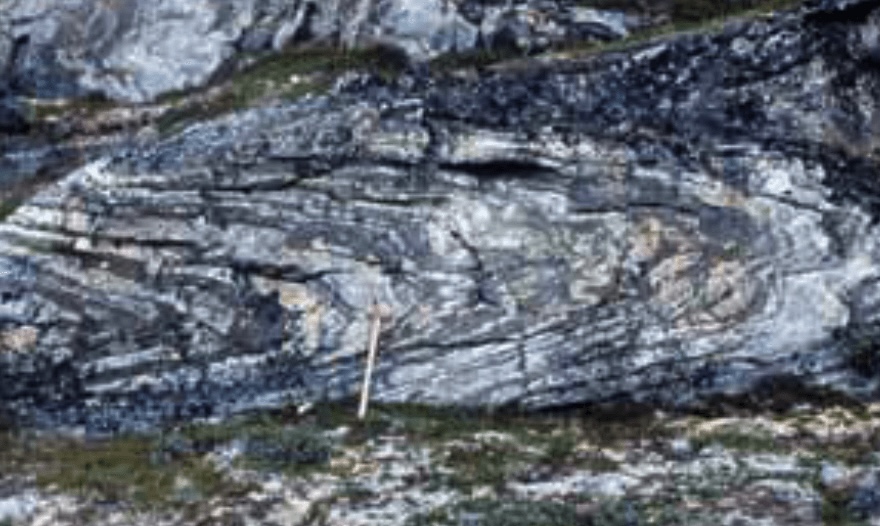
How to Cite
Share
Abstract
Structural analysis of the deeply eroded northern flank of the Palaeoproterozoic Nagssugtoqidian orogen shows marked regional variations in both the orientation and type of fabrics, as is characteristic of Precambrian high-grade terrains subjected to polyphase deformation. Here we investigate the relationship between strain, metamorphic grade, and the resulting structural patterns. The study area south of Aasiaat in West Greenland consists of amphibolite- to granulite-grade Archaean orthogneisses and relatively thin supracrustal units. The regional foliation displays a WSW–ENE to SW–NE strike associated with steep to moderate dips towards the WNW or SSE. Lineation trends are WSW–ENE and generally plunge gently towards the WSW. Mesoscopic fold hinges are usually colinear with the regional lineation. A systematic change in the plunge of lineations occurs across the south-western part of the study area. Towards the south, the lineation plunge progressively increases, despite the generally uniform strike of foliation. This southward increase of lineation pitch is typically associated with the transition from L > S or L = S shape fabrics in rocks characterised by a low pitch, to S > L or S fabrics in the zone of moderate to high pitch. The structural patterns point to subdivision of the study area into a southern domain mostly characterised by S or S > L shape fabrics and a moderate to high angle of lineation pitch, and a northern domain showing L > S or L = S fabrics and low angles of lineation pitch. This subdivision corresponds well with the map scale boundary between granulite facies rocks in the south and amphibolite facies rocks farther north. The observed structural pattern may be explained by two alternative tectonic models: (1) northward indentation of the previously cooled granulite block into the rheologically weaker amphibolite domain, and (2) strain partitioning within a mid-crustal transpression zone. In model 2 the northern domain represents a localised zone dominated by strike-slip kinematics, whereas the southern domain shows evidence of mostly coaxial shortening. Recent geochronology supports the indentator model in spite of limited available data. Despite the details and structural complexities of the two tectonic models, the granulite and amphibolite facies domains seem to form autochthonous segments of a crustal section linked by a transitional zone that was only reactivated and reworked during indentation or transpression. The Nagssugtoqidian compression was effectively transferred across this zone towards the northern amphibolite domain that suffered penetrative deformation during the Palaeoproterozoic event. The N–S shortening was accommodated through folding, indentation and/or strike-slip displacements, rather than by thrusting and folding as seen south of the study area.
How to Cite
Share
Copyright (c) 2006 Stanislaw Mazur, Sandra Piazolo, G Ian Alsop

This work is licensed under a Creative Commons Attribution 4.0 International License.
Downloads
Editors: A.A. Garde and F. Kalsbeek
Central West Greenland exposes a large region of Archaean continental crust that was rifted and subsequently reworked in the Palaeoproterozoic during the Nagssugtoqidian and Rinkian orogenies. The southern margin of the Nagssugtoqidian orogen with its deformed Kangâmiut dykes is a classic example of an orogenic [...]









